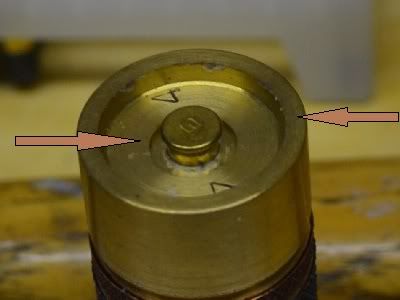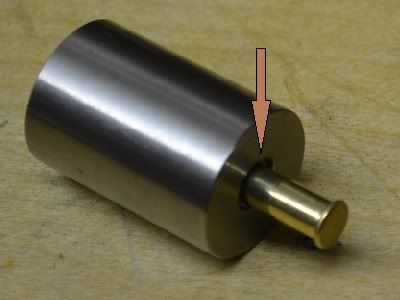Wow Steve. Really into it. I envision all sort of problems with these various kits.
While I noticed none of these in your sample pictures I'd be concerned with:
Does the rim (the hollow rim) of the case get squeezed any? Is there a possibility for interfering with ignition? or at least a reduction in the exposure of the priming material to the poweder?
Does the bullet get forced further into the case by the pressure of these punches?
Looking forward to range tests.
Believe me, I also had those thoughts.
The first time I used the Kelly dies, I was wearing heavy duty safety glasses and the same welder's gloves that I wear when casing bullets.
However, when placed on a flat surface, the force of the hammer blow is spread evenly on the base of the shell rather than violently crimping narrow area like the firing pin.
Convinced of the relative safety, I now just wear my normal safety glasses when working with these.
As far as any of these tools squeezing the rim goes, they are rebated to avoid that.
Poco Kelly Die
Note that not only does the outer ring provide space, but the chamber itself is cut out so the rim makes no contact.
D-Rock Die
Like the Kelly die, the D-Rock die is relieved so that it does not touch the cartridge rim at all.
Waltz Die Set(See earlier post)
The Waltz system uses a shell holder that supports the entire base during forming, and only touches the rim when the formed cartridge is pulled back out of the die.
I can pull the cartridges out of the dies with my bare hands, so the force applied by the shell holder against the rim is minimal.
In all cases, the case itself is not resized.
In fact the lower 1/16" or so never douches the die.
As for pressing live 22 shells into these dies, the force required is less than that of seating primers.
Deep Seating BulletsEarly on, being blessed with ten thumbs, I did manage to deep seat a couple of bullets during my first modifying session when using a steel carpenters hammer.
I quickly went to the light wood mallet that I use when tooling leather.
It works well, and is much easier to control.
The hammer shown in my photographs is an experiment to see if a plastic or rubber tip hammer would be easier to use.
It still proved to be too heavy and my consistency suffered.
I've been surprised in how little force is needed to deform the led in 22 bullets.
My home cast bullets are much harder.
22 Rimfire cartridges are crimped into the bullet.
When the case is supported by the sizing die, the soft bullets deform rather than pass deeper into the case.
Use of excessive force, or adjusting the forming rods so deep that the lead runs out of space to flow into, I'm sure that the bullets can be made to deep seat.
But, those scenarios are pretty radical.
I closely measured the bullet driving band against the case lip before and after forming my full wad cutters.
By carefully adjusting the rod deeper by small increments, I was able to produce a full wad cutter that showed no measurable amount of deep seating.
Smaller side tests include shorts and CB caps, but not on such a large scale.
It will be interesting to see if I can get a CB cap to upset.
I too am looking forward to the shooting part of this test.
Steve